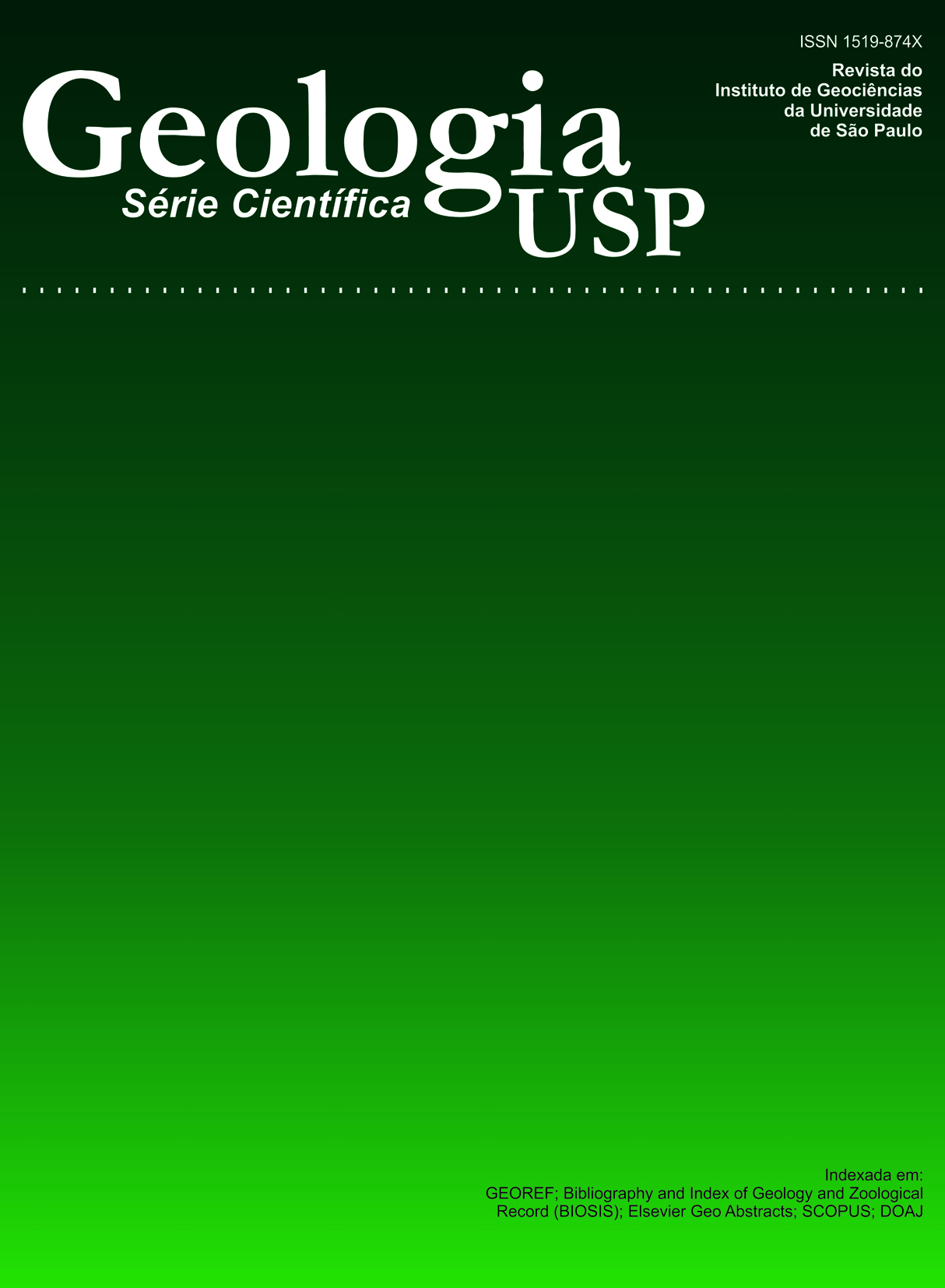Neoproterozoic anatexis of 2.9 Ga old granitoids in the Goiás-Crixás archean block, Central Brazil: evidence from new SHRIMP U-Pb data and Sm-Nd isotopes
DOI:
https://doi.org/10.5327/S1519-874X2003000100001Keywords:
Archean, Goiás, SHRIMP U-Pb, Brasiliano, anatexisAbstract
The first SHRIMP U-Pb ages for granitoid rocks from the southern part of the Goiás-Crixás Archean Block (Caiçara and Uvá complexes) are presented and discussed in combination with Sm-Nd isotopic data in order to elucidate the main aspects of the geological evolution of that part of the Brasília Belt in central Brazil. Zircon grains from a tonalitic gneiss (GOV-4) in the Uvá Complex show that the original tonalite crystallized at 2934 ± 5 Ma. One metamorphic zircon crystal is concordant and indicates an Archean age for the recrystallization episode (2793 ± 3 Ma) and one inherited grain with an age of 3092 ± 9 suggests, together with negative values of µNd(T) (+0.4 and -4.6), that the magma was contaminated with older crust. One leucocratic granite (GOV-1) exposed north of the Goiás greenstone belt crystallized at 626 ± 7 Ma, as indicated by the igneous overgrowths surrounding older inherited cores. The latter indicate a crystallization age of 2893 ± 12 Ma. This rock is interpreted therefore as the product of Neoproterozoic anatexis of ca. 2.89 Ga-old rocks of the Caiçara Complex. This is reinforced by strongly negative µNd(T = 626) values of - 28.0 and -29.0. Its crystallization age is identical to the U-Pb ages of the Itapuranga granite and Uruana quartz syenite, which are exposed to the north of the investigated area and interpreted as syn-tectonic intrusions in relation to the main Brasiliano tectonic event. This represents, therefore, the first evidence of Neoproterozoic magmatism within the Goiás Archean Block and raises the possibility that other leucogranite dykes and stocks identified regionally may also have been formed during the Brasiliano orogeny.Downloads
Download data is not yet available.
Downloads
Published
2003-08-01
Issue
Section
Articles
License
Authors who publish in this journal shall comply with the following terms:
- Authors keep their copyright and grant to Geologia USP: Série Científica the right of first publication, with the paper under the Creative Commons BY-NC-SA license (summary of the license: https://creativecommons.org/licenses/by-nc-sa/4.0 | full text of the license: https://creativecommons.org/licenses/by-nc-sa/4.0/legalcode) that allows the non-commercial sharing of the paper and granting the proper copyrights of the first publication in this journal.
- Authors are authorized to take additional contracts separately, for non-exclusive distribution of the version of the paper published in this journal (publish in institutional repository or as a book chapter), granting the proper copyrights of first publication in this journal.
- Authors are allowed and encouraged to publish and distribute their paper online (in institutional repositories or their personal page) at any point before or during the editorial process, since this can generate productive changes as well as increase the impact and citation of the published paper (See The effect of Open Access and downloads on citation impact).
How to Cite
Pimentel, M. M., Jost, H., Fuck, R. A., Armstrong, R. A., Dantas, E. L., & Potrel, A. (2003). Neoproterozoic anatexis of 2.9 Ga old granitoids in the Goiás-Crixás archean block, Central Brazil: evidence from new SHRIMP U-Pb data and Sm-Nd isotopes . Geologia USP. Série Científica, 3, 1-12. https://doi.org/10.5327/S1519-874X2003000100001





